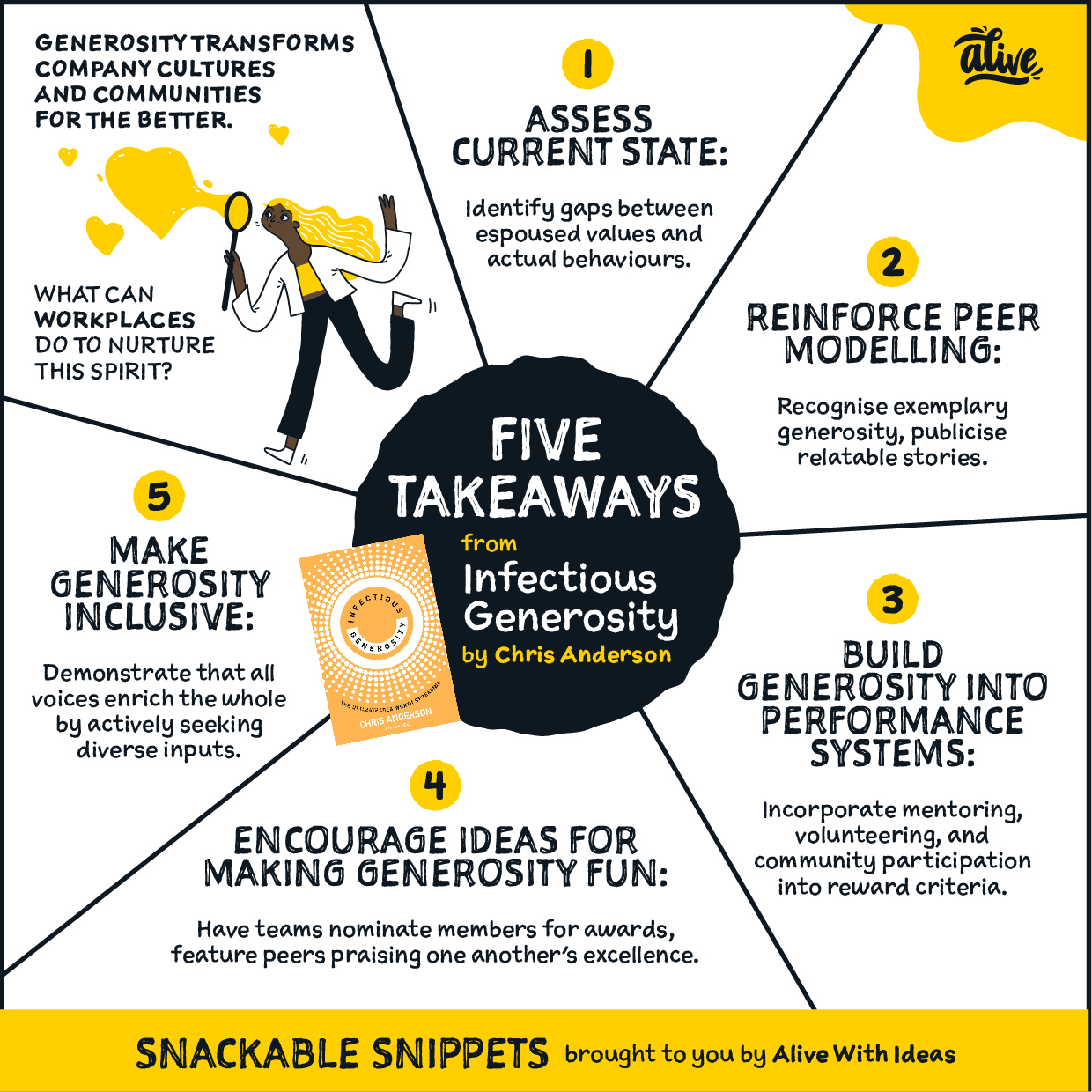“Generosity is deeply wired into every human and it leads to greater happiness within us.”
Based on Chris Anderson’s underlying value system, which was influenced by his parents, his book Infectious Generosity spotlights how acts of giving can spark a ripple effect to cultivate positive societal change.
As individuals, we can be generous with more than money. We can share time, knowledge, attention, skills, and more. Beyond this, Infectious Generosity brings the workplace into play, making the case for leaders to be more deliberate in sparking that cooperative flame and how they can play a pivotal role by modelling and rewarding generosity.
Generosity is like a muscle; the more you exercise it, the stronger it grows. Being intentional by practicing generosity-inducing activities is a must.
So what practical things can leaders and managers do to strengthen this muscle and nurture a spirit of generosity across their teams and organisations?
Our latest Snackable Snippet summarises some of Anderson’s key points around how, by focusing on generosity strategically and with accountability, businesses can drive real social impact beyond vanity metrics and PR spin…

Five takeaways from Infectious Generosity
Generosity transforms company cultures and communities for the better.
What can workplaces do to nurture this spirit?
- Assess current state: Identify gaps between espoused values and actual behaviours.
- Reinforce peer modelling: Recognise exemplary generosity, publicise relatable stories.
- Build generosity into performance systems: Incorporate mentoring, volunteering, and community participation into reward criteria.
- Encourage ideas for making generosity fun: Have teams nominate members for awards, feature peers praising one another’s excellence.
- Make generosity inclusive: Demonstrate that all voices enrich the whole by actively seeking diverse inputs.
From Infectious Generosity by Chris Anderson.
Snackable Snippets brought to you by Alive With Ideas
















